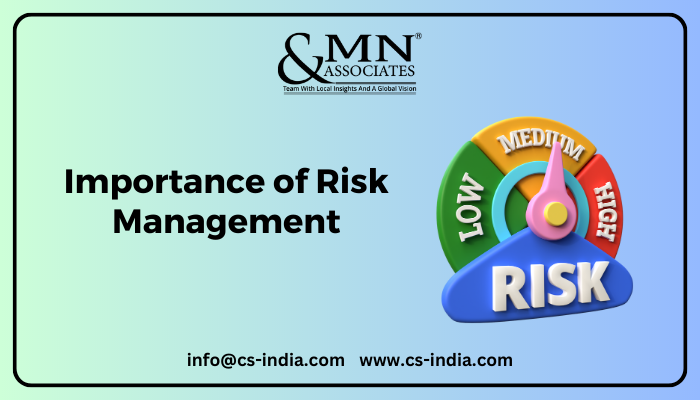Understanding the Value of Risk Management in Contemporary Business Practices
Understanding the Value of Risk Management in Contemporary Business Practices
Blog Article
Checking out the Significance of Risk Management for Effective Decision-Making Approaches
In the complex globe of business, Risk Management becomes a vital aspect in the decision-making process. The capacity to recognize potential hazards and possibilities, and strategize appropriately, can spell the distinction between success and failure. With devices such as SWOT and PESTEL, organizations are outfitted to make educated choices, cultivating strength and adaptability in an ever-changing environment. Wondering exactly how this works? Allow's unpack the dynamics further.
Comprehending the Principle of Risk Management
Risk Management, a critical element in decision-making, is often misinterpreted or oversimplified. Risk Management involves structured and regimented strategies, making use of data and informative evaluations. From financial unpredictabilities, legal liabilities, calculated Management mistakes, to accidents and natural catastrophes, it resolves numerous risks - importance of risk management.
The Role of Risk Management in Decision-Making Processes
In the world of strategic preparation and organization operations, Risk Management plays an important role in decision-making processes. Risk Management thus ends up being a crucial tool in decision-making, helping leaders to make enlightened choices based on a thorough understanding of the risks involved. Risk Management serves as a vital element in the decision-making procedures of any type of company.

Exactly How Risk Management Improves Strategic Planning
In the context of critical planning, Risk Management plays a crucial duty. Launching with the recognition of prospective risks, it even more reaches the implementation of Risk mitigation steps. The duty of Risk Management is dynamic yet not fixed, as it requires constant tracking and adjusting of techniques.
Identifying Potential Threats

Carrying Out Risk Mitigation
Risk mitigation techniques can vary from Risk avoidance, Risk transfer, to run the risk of reduction. Each method ought to be customized to the details Risk, considering its potential impact and the organization's Risk tolerance. Reliable Risk mitigation calls for a deep understanding of the Risk landscape and the potential impact of each Risk.
Monitoring and Adjusting Methods
Though Risk mitigation is an essential action in calculated preparation, continual surveillance and adjustment of these methods is equally important. This continuous procedure allows organizations to determine new risks and reassess existing ones, making certain the carried out methods stay efficient in the ever-changing business environment. look here It likewise offers a chance to assess the success of the Risk Management steps, enabling modifications to be made where required, further boosting calculated preparation. Efficient monitoring and change call for using analytics and crucial efficiency indications (KPIs) to determine effectiveness. These tools offer useful data-driven insights that can inform tactical decision-making. Tracking and adjusting Risk Management techniques is a critical element for boosting a company's strength and critical planning.
Situation Studies: Effective Risk Management and Decision-Making
In the world of service and money, effective Risk Management and decision-making frequently serve as the columns of thriving business. These instances highlight the value of astute Risk Management in decision-making procedures. These instances emphasize the critical duty of Risk Management in tactical decision-making.
Tools and Strategies for Effective Risk Management
Navigating the elaborate puzzle of Risk Management requires the ideal set of tools and strategies. These devices, such as Risk signs up and warmth maps, aid in recognizing and evaluating potential dangers. Strategies consist of both quantitative techniques, like sensitivity analysis, and qualitative techniques, such as SWOT evaluation. These assistance in focusing browse around here on risks based on their possible impact and likelihood. Risk response strategies, an essential element of Risk Management, entail approving, avoiding, moving, or mitigating risks. Tracking and regulating threats, through regular audits and evaluations, ensure that the methods continue to be efficient. With these tools and strategies, decision-makers can browse the complex landscape of Risk Management, thus promoting informed and efficient decision-making.
Future Fads in Risk Management and Decision-Making Approaches
As we discover the large landscape of Risk Management, it comes to be apparent that the methods and tools made use of today will certainly proceed to progress. The principle of Risk society, where every participant of an organization is aware and included in Risk click here for more Management, will get a lot more prominence. These fads declare a more inclusive and positive technique towards Risk Management and decision-making.
Verdict

Risk Management hence ends up being a vital device in decision-making, assisting leaders to make enlightened options based on a thorough understanding of the risks included. Risk reduction strategies can vary from Risk evasion, Risk transfer, to run the risk of reduction (importance of risk management). Reliable Risk mitigation requires a deep understanding of the Risk landscape and the potential influence of each Risk. Risk feedback approaches, a vital element of Risk Management, include approving, avoiding, moving, or mitigating risks. The idea of Risk culture, where every participant of an organization is conscious and entailed in Risk Management, will certainly get more prestige
Report this page